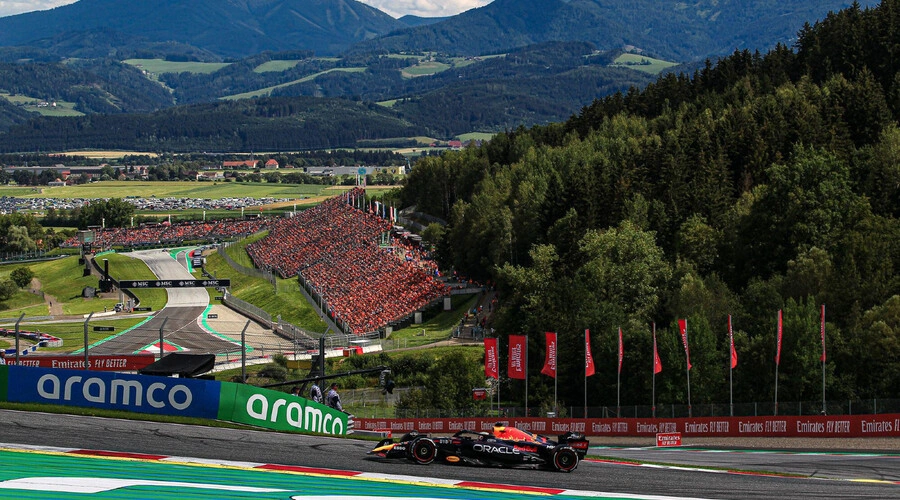What to Expect at the Red Bull Ring
The Austrian Grand Prix returns to the picturesque hills of Styria at one of Formula 1’s most dynamic and challenging tracks: the Red Bull Ring. Whether you’re a long-time F1 fan or a newcomer curious about the sport, this guide breaks down the track, the racing action, and what to watch out for this weekend.
The Track: Red Bull Ring Overview
- Location: Spielberg, Austria
- Track Length: 4.318 kilometers (2.683 miles)
- Number of Laps: 71
- Total Race Distance: ~306 km
- Turns: 10
- Elevation Change: 65 meters
- Fastest Lap: 1:05.619 (Carlos Sainz, 2020)
What Are Track Sectors?
In Formula 1, a race track is divided into three sectors for timing purposes. These help F1 teams, commentators, and fans break down where a driver is gaining or losing time across the lap.
Sector 1: Power and Precision
Turns Covered: Turn 1 to just before Turn 3
Key Features:
- Starts on the main straight and includes the heavy braking into Turn 1.
- Includes a steep uphill climb and another DRS zone leading into Turn 3.
- High-speed with emphasis on acceleration and straight-line speed.
- A key overtaking opportunity at Turn 1 and again under braking for Turn 3.
What Makes It Tricky:
- Drivers must brake late but cleanly into Turn 1.
- The uphill gradient to Turn 3 makes braking stability critical.
Sector 2: Rhythm and Flow
Turns Covered: From Turn 3 exit through Turn 6
Key Features:
- Begins right after Turn 3, includes the Speed Trap just before Turn 4.
- Sweeps downhill through Turns 4, 5, and 6.
- Balances between braking performance and car control through medium-speed curves.
What Makes It Tricky:
- The transition from flat-out speed to technical braking.
- Turns 4 and 6 can catch drivers out with elevation drops and gravel on the outside.
Sector 3: Precision and Limits
Turns Covered: Turn 7 to Turn 10
Key Features:
- The most technical part of the lap.
- Starts after the descent and continues through a fast-paced series of corners.
- Ends with Turns 9 and 10, where track limits are strictly monitored.
What Makes It Tricky:
- These corners are taken at high speed, and the penalty for running wide can be a deleted lap time.
- Drivers must balance speed with absolute precision—a small mistake can ruin an entire qualifying lap.
Elevation and Weather Challenges
With a 65-meter vertical difference between its lowest and highest points, the Red Bull Ring features one of the steepest elevation changes in F1. These undulations impact braking points and corner grip, especially in varying weather.
And weather is never far from the conversation here. The location in the Styrian mountains means conditions can change quickly — dry one moment, wet the next — creating constant challenges for the F1 drivers and strategists alike.
Where Overtaking Happens
Overtaking is very possible at this circuit, particularly in these zones:
- Turn 1: A tight right-hander at the end of the main straight.
- Turn 3: A steep uphill corner with heavy braking.
- Turn 4: A downhill approach, often the site of bold passing attempts.
A Lap of the Red Bull Ring
Let’s take a tour around the circuit:
- Turn 1: A sharp 90-degree right-hand corner after the start/finish straight. Braking uphill adds complexity.
- Turns 2–3: The climb continues. Turn 3 is deceptively tight — perfect for late-braking overtakes but risky.
- Turn 4: A downhill swoop, drivers must commit early and avoid going wide onto the gravel.
- Turns 5–7: Fast, flowing corners that reward rhythm and smooth steering.
- Turns 8–10: The technical final sector, where exceeding limits can cost dearly. Car placement and throttle control are critical.
Key 2025 Storylines
Lando Norris: In Recovery Mode
After a costly collision with teammate Oscar Piastri in Canada, Norris arrives in Austria needing a clean and competitive weekend to rebuild momentum and internal team trust.
George Russell: Can Lightning Strike Twice?
Fresh from a win in Canada, Russell returns to the Red Bull Ring, where he also won in 2024. A repeat victory would solidify his place as a serious title contender.
Red Bull Racing: Home Ground Pressure
With five wins in the last nine Austrian Grands Prix, Red Bull has a proven record at its home circuit. However, all is not calm behind the scenes:
- The team is introducing new upgrades this weekend.
- Rumors continue that Max Verstappen could consider an exit if performance falters in the coming F1 races.
Ferrari: Quietly Making Moves
Ferrari is bringing a new floor design and possibly a revised rear suspension to improve their pace. They’re aiming to climb out of third in the Constructors’ Championship and close the gap to Red Bull and Mercedes.
The Austrian Grand Prix consistently delivers action-packed racing, bold overtakes, and the chance for both heroics and heartbreak — all in under 70 seconds a lap. Whether you’re rooting for the home team (Red Bull), a Ferrari resurgence, or a wildcard win, this race is a must-watch.
So grab your snacks, wear your team colors, and get ready for lights out in Spielberg.
Keep checking F1 Sprint News to stay up to date with the latest F1 news.
